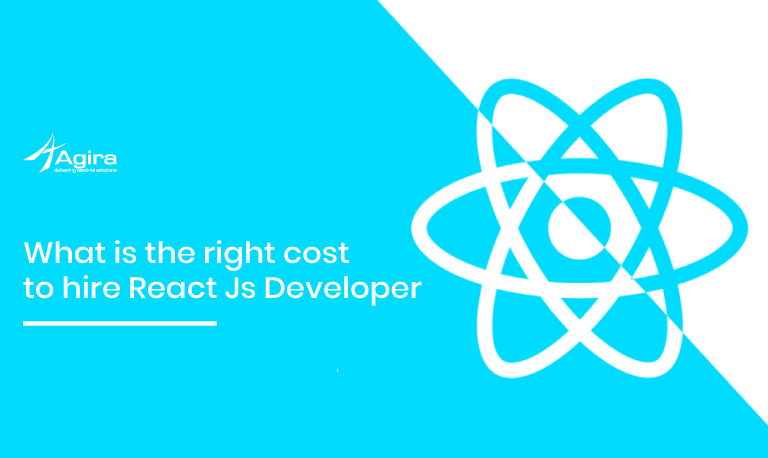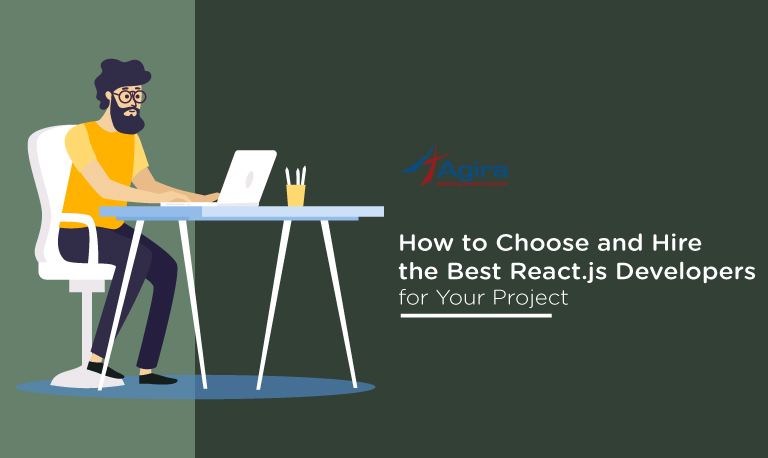Table of Contents
These days, React is now the most common front-end technology, with more and more businesses adopting it. If you’re preparing for a work interview or looking for top React JS Interview questions to hire React JS Developers, this post is perfect for you. Here’s a complete list of all the most popular ReactJS interview questions, which will also help you understand the basic concepts of React.
React is an open-source JavaScript library for creating quick, fast, and scalable front-ends that are powerful, declarative, and versatile.
The method of designing web applications gets simpler for developers with a JavaScript experience.
Let’s get a better understanding of React’s key principles by answering those often asked interview questions.
1. What are the advantages of using React?
Use of Virtual DOM to improve efficiency
The view is rendered using virtual DOM in React. Virtual DOM is a virtual version of the actual DOM, as the name implies. A new virtual DOM is generated every time the data in a react app shifts. It’s much easier to build a virtual DOM than it is to render the UI inside the browser. As a result of the use of interactive DOM, the app’s performance increases.
Gentle learning curve
Unlike Angular, React has a gentle learning curve. Anyone with a basic understanding of javascript will use React to create web applications.
SEO friendly
Developers may use React to create interactive user interfaces that are easy to navigate in different search engines. It also supports server-side rendering, which improves an app’s SEO.
Reusable components
For application development, React employs a component-based architecture. Components are self-contained, interchangeable code chunks. These elements may be reused in a variety of similar-functioning programmes. The reuse of materials speeds up the construction process.
Huge ecosystem of libraries to choose from
React gives you the flexibility to use the software, libraries, and architecture that best fit your needs when creating an application.
2. What do you understand by Virtual DOM? Explain its working.
A virtual DOM is a lightweight JavaScript object that is essentially a replica of the actual DOM. As Objects and their properties, this node tree lists the elements, their attributes, and text. The render feature in React builds a node tree from React components. It updates the tree in response to changes in the data model, which are triggered by different user or device behaviour.
The Virtual DOM works in three simple steps.
- The entire UI is re-rendered in Virtual DOM representation if any underlying data changes.
- The disparity between the old and new DOM representations is then determined.
- After the measurements are completed, the real DOM will be revised to reflect only the changes that have occurred.
3. Differentiate between Real DOM and Virtual DOM.
Real DOM vs Virtual DOM
Real DOM
- 1. It updates slow.
- 2. Can directly update HTML.
- 3. Creates a new DOM if element updates.
- 4. DOM manipulation is very expensive.
- 5. Too much memory wastage.
Virtual DOM
- 1. It updates faster.
- 2. Can’t directly update HTML.
- 3. Updates the JSX if element updates.
- 4. DOM manipulation is very easy.
- 5. No memory wastage.
4. What are the limitations of React?
The following are some of React’s limitations:
- React is a library, not a whole framework.
- It has a huge library that needs some time to comprehend.
- It can be difficult for inexperienced programmers to comprehend.
- Since it uses inline templating and JSX, the coding becomes more complicated.
5. How is everything is a component in React? Explain.
The UI of a React programme is made up of components. These modules break down the entire user interface into thin, reusable chunks. Then, without influencing the rest of the UI, it leaves each of these components independent of one another.
6. What is the purpose of render() in React.
Render() is required for any React part. It returns a single React variable that is the native DOM component’s representation. If more than one HTML entity has to be made, they must all be contained within one enclosing tag, such as <form>, <group>, <div>, and so on. This role must be held pure, which means it must still return the same answer.
7. What are the different phases of React component’s lifecycle?
There are three different phases of React component’s lifecycle:
- The part is about to begin its life journey and make its way to the DOM during the initial rendering process.
- Once the component is added to the DOM, it can only update and re-render when a prop or state changes. This occurs only during this period.
- The part is demolished and separated from the DOM during the unmounting process of its life cycle.
8. What were the major problems with MVC framework?
Following are some of the major problems with MVC framework:
- Manipulation of the DOM was extremely costly.
- The applications were sluggish and ineffective.
- There was a lot of wasted memory.
- A complex architecture was built around models and views due to circular dependencies.
9. Explain Flux.
Flux is an architectural pattern that enforces data flow in just one direction. It uses a central Store, which has authority over all data, to manage derived data and allow communication between multiple components. Any data updates in the programme must happen only here. Flux improves the application’s reliability and decreases run-time failures.
10. What is Redux?
In today’s industry, Redux is one of the most common front-end programming libraries. It is a state container for JavaScript applications that is used to handle the whole state of the programme. Redux applications are simple to verify and can run in a variety of environments with stable behaviour.
All of these are interview questions that are commonly posed. We hope that these questions helped you grasp the fundamentals of React. Best of luck with your forthcoming career interview.
Talk To Experts
Get end-to-end web application development solutions for an unparalleled back-end and front-end experience. With our top-of-the-line technology expertise, We have been entitled to prestigious titles and awards as the best software development company that caters to industries and clients worldwide.










